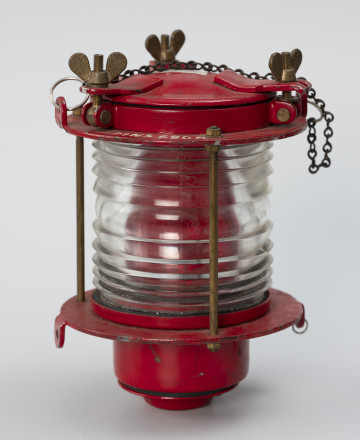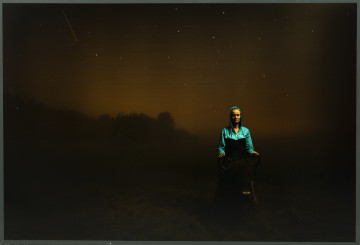
Stern oil lantern
1945 — 1950
National Museum in Szczecin
Part of the collection: Equipment of watercrafts
Carbide beacons, powered by acetylene gas, were used in difficult or dangerous waters as floating beacons, marking a fairway that provides a path for ships of a certain depth. Equipped with the Daléna system, acetylene beacons were manufactured by the Swedish company AGA since 1905. They varied from ordinary carbide lamps in their use of two inventions by Gustaf Dalén (1869-1937), a special substrate called agamassan, which ensured the safe use of unstable acetylene, and the so-called solar valve (sw. solventil), which enabled the lamps to be operated cost-effectively by means of a sensor that responded to sunlight and automatically switched the gas supply off or on depending on the time of day. Gustav Dalén was awarded the Nobel Prize for this invention in 1912, and carbide lamps became the main way to illuminate lighthouses and fairways until the mid-20th century. The featured unit was also fitted with a special lenticular glass, directing the beam of light at a specific angle and color, which improved visibility and made it easier for vessels to navigate the waterway. Leszek Kocela
Author / creator
Object type
signal lantern, navigational aid
Technique
batch production
Material
metal, brass
Origin / acquisition method
purchase
Creation time / dating
Creation / finding place
Owner
Muzeum Narodowe Szczecin
Identification number
Location / status

1945 — 1950
National Museum in Szczecin

1970 — 1979
National Museum in Szczecin

2011
National Museum in Szczecin
DISCOVER this TOPIC
National Museum in Szczecin
DISCOVER this PATH
Educational path